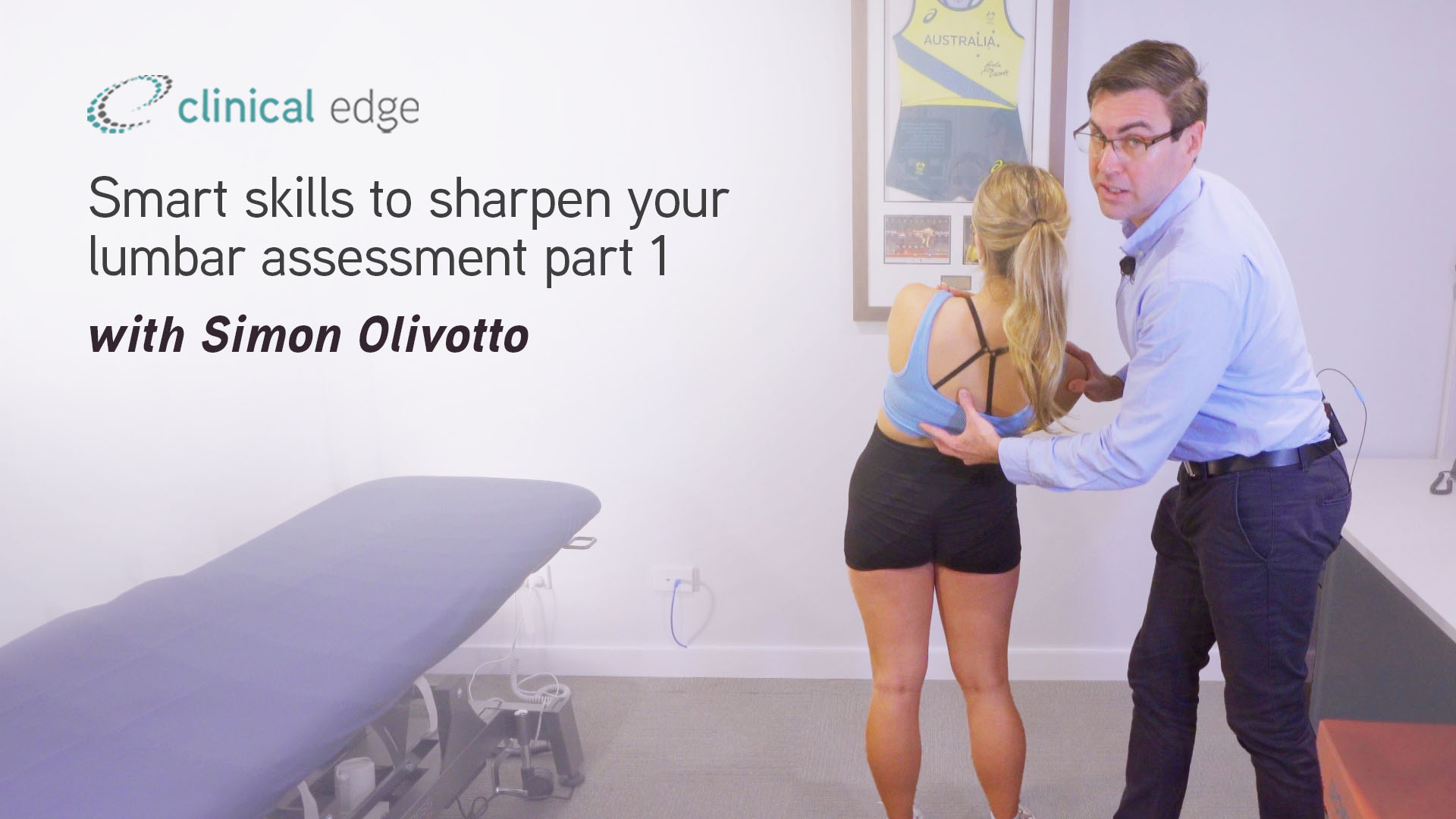There's so much to cover in a lumbar spine assessment; as busy clinicians, we only have limited time in our treatment sessions. Should you try to squeeze in all the tests you want to perform in a limited amount of time or restrict your testing and risk not getting to the heart of the problem and knowing how to help your patients?
In this presentation, "Smart skills to sharpen your lumbar assessment part 1", Simon Olivotto (Specialist Musculoskeletal Physiotherapist, FACP) performs video demonstrations of the assessment tests that'll give you and your low back pain patient clarity on
- what's wrong with them
- how long it's going to take them to get better
- is there anything they can do to help themselves
- what you can do to help them
You'll discover how to use clinical reasoning to know when and how to use each test, so you can streamline your assessment and make sense of the information you get from each test, as Simon reveals:
-
Where to start your assessment, especially if your patient's pain is irritable, to quickly get the info you need without stirring up their pain.
-
A quick functional assessment.
-
How to assess patients that have pain:
- Sitting
- Standing
- Bending
- Lifting
- Squatting
- After extended periods of sitting or standing, e.g., it takes longer for pain to come on than your treatment session.
-
How to choose and prioritise assessment tests rather than testing every movement.
-
How to describe assessment tests with clear instructions to patients so you can get accurate test results.
-
How to perform an effective range of movement (ROM) assessment to determine why your patient is experiencing pain.
-
When and how to use combined movements and overpressure to determine a direction of treatment for manual therapy or exercise.
-
When to avoid combined movements and overpressure so you don't stir up your patient.
-
How and when to use a repeated movement assessment to identify the source of symptoms and helpful treatments.
Watch this presentation now to streamline your low back pain assessment.
In "Smart skills to sharpen your lumbar assessment part 2", Simon will explore differential tests, so you can quickly rule in or rule out the hip joint, lateral hip tendons and SIJ as a source or contributor to pain.
CLICK HERE to improve your assessment & diagnostic skills with a free trial Clinical Edge membership

